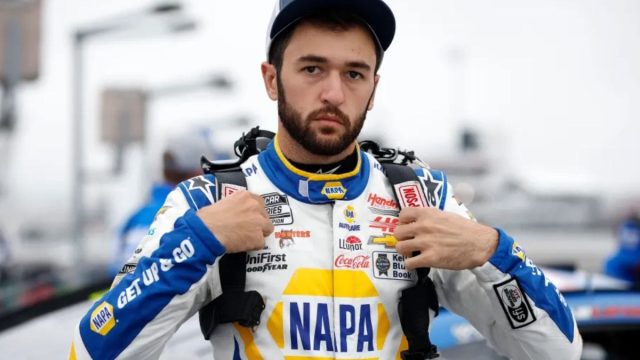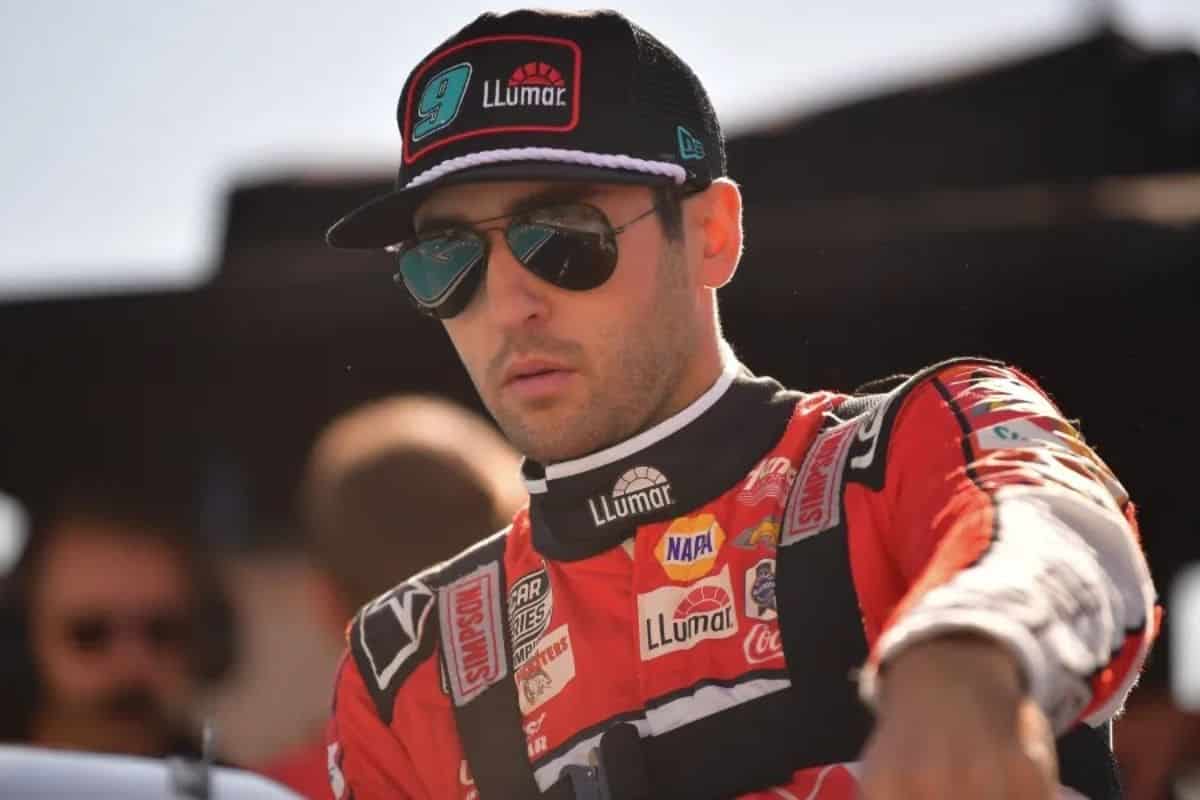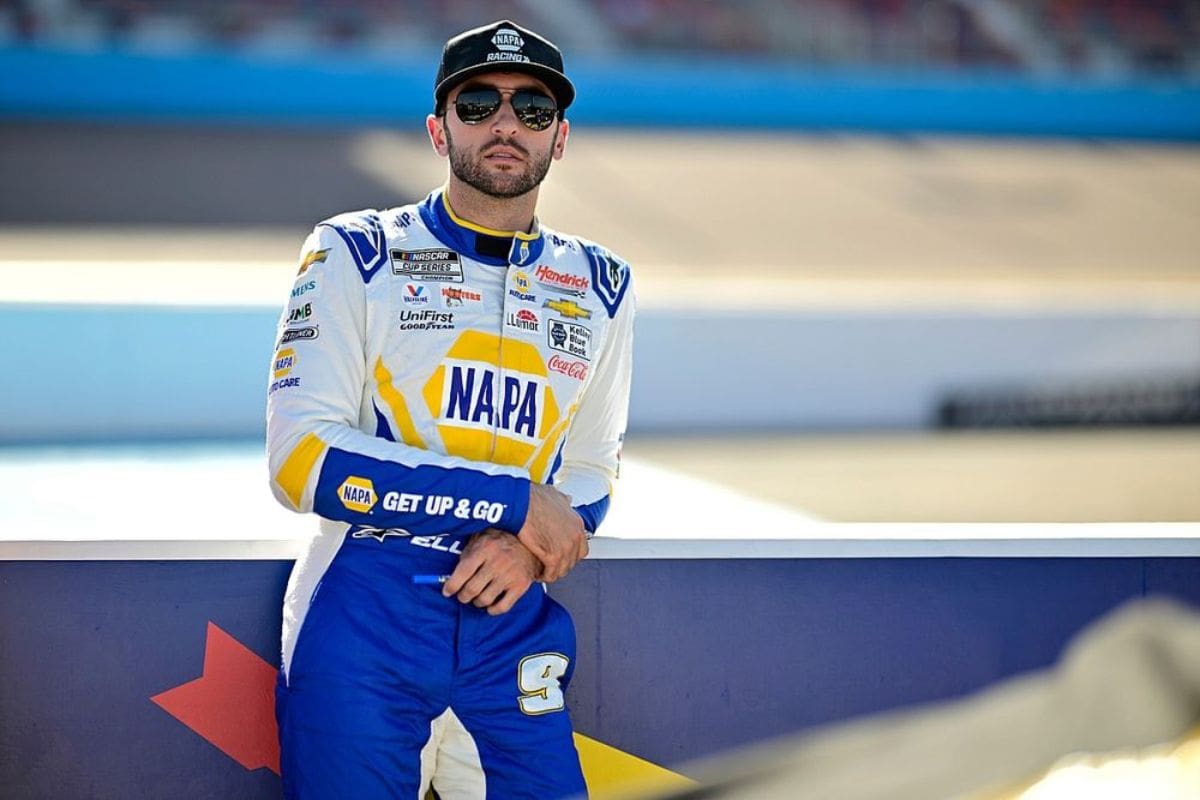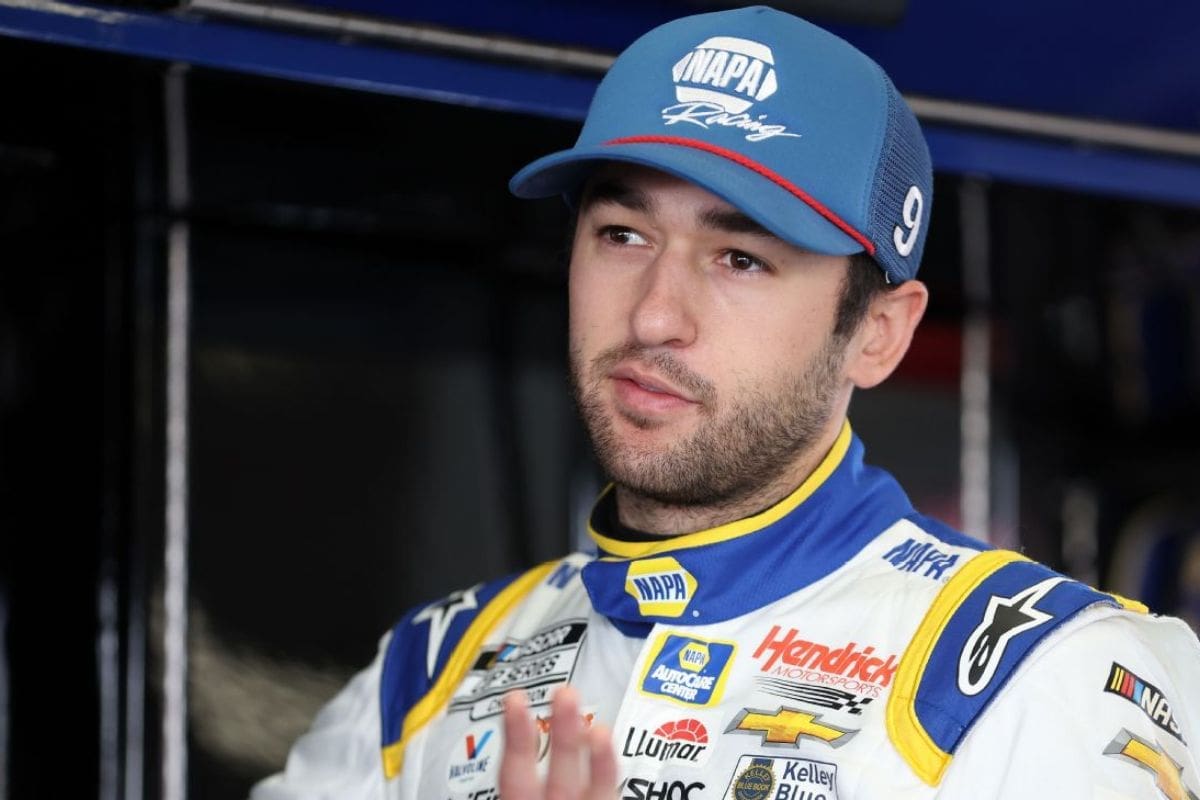Chase Elliott Previews Iowa Debut: Chase Elliott is set for his debut at Iowa Speedway, expressing both excitement and caution. Recent NASCAR practices have highlighted significant tire issues, with unexpected blowouts affecting drivers like Ross Chastain and Christopher Bell, prompting teams to reassess strategies. Elliott emphasizes the importance of understanding tire wear patterns and track conditions, especially with the newly repaved surface that offers varying traction levels. As the race progresses, the key will be in adapting quickly to shifting grip zones and rubber buildup. Elliott’s focus on rapid adjustments and strategic lane choices will be essential for top performance. Explore more about this critical preparation.
Key Highlights
- Chase Elliott emphasizes the need for rapid adaptation to evolving track conditions at Iowa Speedway.
- Tire wear and unexpected blowouts are primary concerns for teams and drivers, including Elliott.
- The newly repaved track’s varying traction levels necessitate strategic decision-making on lane usage.
- Elliott’s team is focusing on preserving tire integrity and handling the Next Gen car’s performance challenges.
- Drivers must balance speed and tire wear, especially as track conditions shift during the race.
Concerns Over Tire Issues in NASCAR Cup Series Practice
Friday’s practice session at Iowa Speedway brought to light significant concerns over tire reliability, as multiple red flags were triggered by unexpected blowouts affecting several drivers, including Ross Chastain and Christopher Bell. Chastain’s left rear tire failure necessitated the deployment of tow trucks to remove his #1 Chevy from the track, while Bell’s right front tire malfunction prompted a switch to a backup car. These incidents highlighted pressing issues regarding tire wear and the need for improved safety precautions.
The unpredictability of tire performance has compelled teams to reassess their strategies. The unusual tire wear patterns observed, particularly among Toyota-backed drivers, have raised alarms about potential risks during the race. Performance adjustments are now vital, as teams work to mitigate the adverse effects of tire degradation. By closely monitoring tire volume and temperature, teams aim to gather necessary data that will inform their race-day tactics.
Driver strategies are also evolving in response to these tire concerns. Drivers are likely to adopt a more conservative approach during practice sessions and early race laps to preserve tire integrity. This cautious strategy will allow them to avoid the pitfalls seen during Friday’s session, ensuring that they remain competitive while prioritizing safety.
Effective team communication is important in addressing these tire-related issues. Engineers, pit crews, and drivers must maintain a continuous dialogue to swiftly identify and rectify any anomalies. Proactive measures, such as real-time data analysis and immediate feedback loops, will be critical in adapting to the challenging conditions presented by Iowa Speedway.
Chase Elliott’s Decent Outing Amidst Tire Issues
Chase Elliott navigated the challenging conditions of Iowa Speedway with commendable skill, managing to deliver a solid performance despite the widespread tire issues plaguing other drivers. During Friday’s practice session, Elliott, representing Hendrick Motorsports, demonstrated a resilient approach, adapting swiftly to the complications arising from erratic tire pressures and manufacturer setups.
Elliott acknowledged the uncertainty surrounding the potential impact of these tire problems on his session performance. He emphasized the necessity of further investigating the causes to mitigate any adverse effects in subsequent races. His pragmatic outlook reflects a deep understanding of the intricacies involved in NASCAR racing, where every variable, from tire pressures to track conditions,.
“I don’t really know, I’m not sure. We just got done running so curious to dive in and see if it had anything to do with pressure locations or manufacturer setups. Who knows? We’ll see,” – Elliott
A key aspect of Elliott’s preparation involved closely monitoring tire performance and collaborating with his team to fine-tune tire pressures and manufacturer setups. This proactive approach highlights the importance of meticulous attention to detail in achieving a balanced and competitive race configuration. The following table provides a snapshot of key elements from Elliott’s practice session:
“I really don’t know until we kind of get out there and see”
Chase Elliott on if the tire issues that happened practice will affect the racing on Sunday.
📹 @m_massie22 pic.twitter.com/v3F8s4A3pb
— Frontstretch (@Frontstretch) June 14, 2024
Elliott’s ability to deliver a decent outing amidst these challenges speaks to his adaptability and the cohesive effort of his team. As they continue investigating the causes of these tire issues, their insights will be instrumental in refining strategies and ensuring excellent performance in future sessions. This proactive stance sets a benchmark for excellence and resilience in the face of adversity, crucial traits for any successful NASCAR driver.
Track Conditions and Lane Advantages
The varying traction levels on the newly repaved Iowa Speedway present unique challenges and opportunities for drivers, particularly in determining the best racing lanes. During practice sessions, Chase Elliott noted that the bottom lane offered the most grip initially, providing a clear advantage in the early stages of the race. However, Elliott speculated that as the race progresses, the high lanes could become more favorable, potentially altering the dynamics of the competition.
Elliott’s track insights are invaluable, especially considering the grip variations drivers will face. The newly repaved surface of Iowa Speedway has not yet accumulated the rubber buildup typically seen on more seasoned tracks, resulting in inconsistent traction across different areas. This lack of uniform grip can pose significant tire challenges, as drivers must carefully manage tire wear and select the best racing line to maintain speed and control.
In the early laps, the bottom lane may appear to be the preferred choice, but as more laps are completed, the high lanes could offer increased grip. This shift is contingent on how the track evolves throughout the race, with tire rubber gradually enhancing the grip of the higher lanes. The strategic decision-making regarding lane usage will be vital, with drivers needing to adapt swiftly to the changing conditions to maintain a competitive edge.
Rubber Buildup and Surface Dynamics
Understanding the implications of rubber buildup and surface dynamics is crucial for drivers aiming to maintain peak performance on the newly repaved Iowa Speedway. The fresh pavement presents a unique set of challenges, primarily revolving around grip levels and tire wear. Initially, the bottom lane benefits from continuous rubber buildup, offering superior grip. However, as the race progresses, this advantageous grip can diminish, making the surface increasingly slick and demanding for drivers.
Chase Elliott has highlighted these evolving surface changes, noting that the higher racing lanes, while currently less inviting due to the shiny new pavement, are poised to become critical as the event unfolds. This shift is a classic example of track evolution, where the surface dynamics alter as more cars lay down rubber, changing the grip levels across different sections of the track. Drivers must stay vigilant, adjusting their racing lines to optimize performance and minimize tire wear.
“Honestly, I was thinking that it would be a lot of grip around the bottom. I do think the second lane will be decent at some point, but it will definitely need to be worked in. It kind of has that fresh repaved shine to it that is not very inviting to want to go run on. But in the race, you’ll certainly be forced to run higher and I think that’ll end up working it in.” – Elliott
The strategic importance of understanding these surface changes cannot be overstated. As the grip levels fluctuate, drivers must adapt their approach, finding the balance between speed and tire conservation. The higher lanes, though initially underutilized, are expected to come into play, offering alternative racing lines that could provide a competitive edge.
Outlook on NASCAR’s Debut at Iowa Speedway
As anticipation builds for NASCAR’s inaugural race at Iowa Speedway, the spotlight turns to how the Next Gen car will handle the intricacies of the freshly repaved track. With the surface being a significant variable, drivers like Chase Elliott are carefully preparing for potential performance concerns that could arise.
The freshly laid asphalt introduces an element of unpredictability, challenging teams to make precise strategic adjustments to optimize their cars’ performance.
One of the primary concerns revolves around tire wear and grip levels. The new pavement could lead to rapid tire degradation, making strategic tire management a critical aspect of the race. Chase Elliott, known for his adaptability and keen racing intellect, has been vocal about the necessity for drivers to stay vigilant and responsive to the track’s evolving conditions.
The Next Gen car, with its revised aerodynamics and improved mechanical grip, will be put to the test on Iowa Speedway’s unique layout. Performance concerns are not only centered on tire wear but also the car’s ability to handle the track’s corners and straightaways efficiently. Strategic adjustments.sential in addressing these challenges.
News in Brief: Chase Elliott Previews Iowa Debut
The inaugural NASCAR Cup Series event at Iowa Speedway presents a complex blend of challenges and opportunities. Tire issues emerged as a significant concern during practice, potentially impacting performance and safety.
Despite these setbacks, Chase Elliott demonstrated commendable adaptability. The track’s unique conditions and lane dynamics, coupled with rubber buildup, will play a pivotal role in race outcomes.
The debut at Iowa Speedway is poised to offer compelling insights into both driver skill and strategic innovations.
ALSO READ: NASCAR Fans Praise Chase Elliott for Settling Busch Spinout



